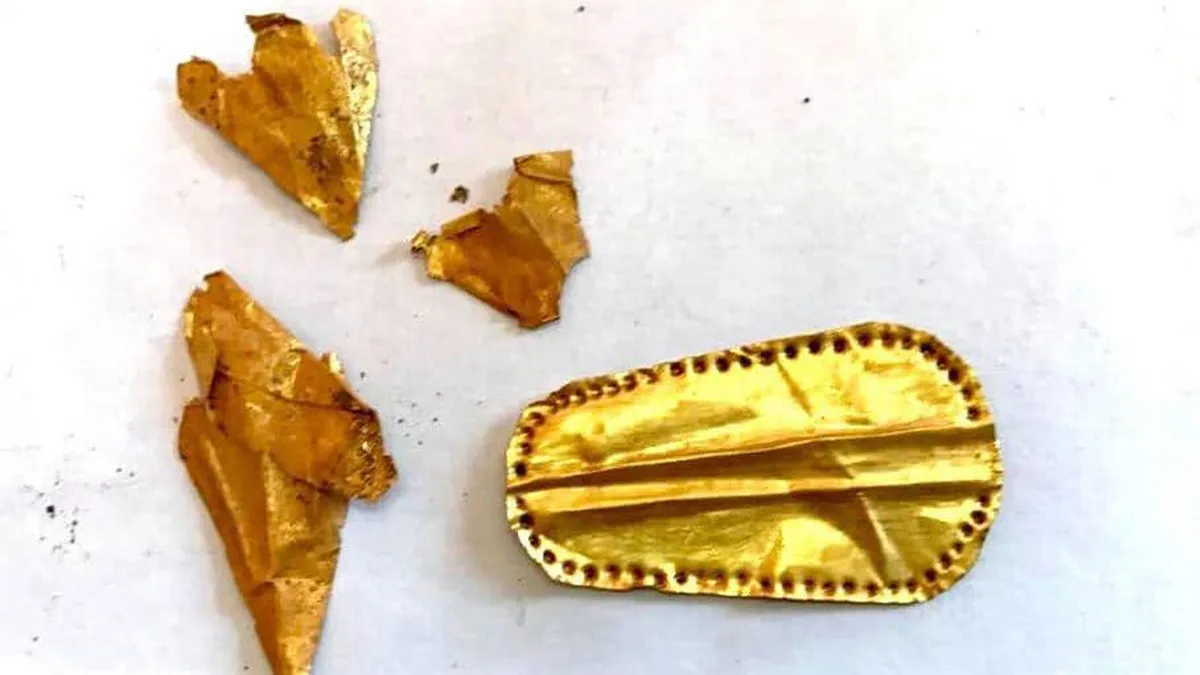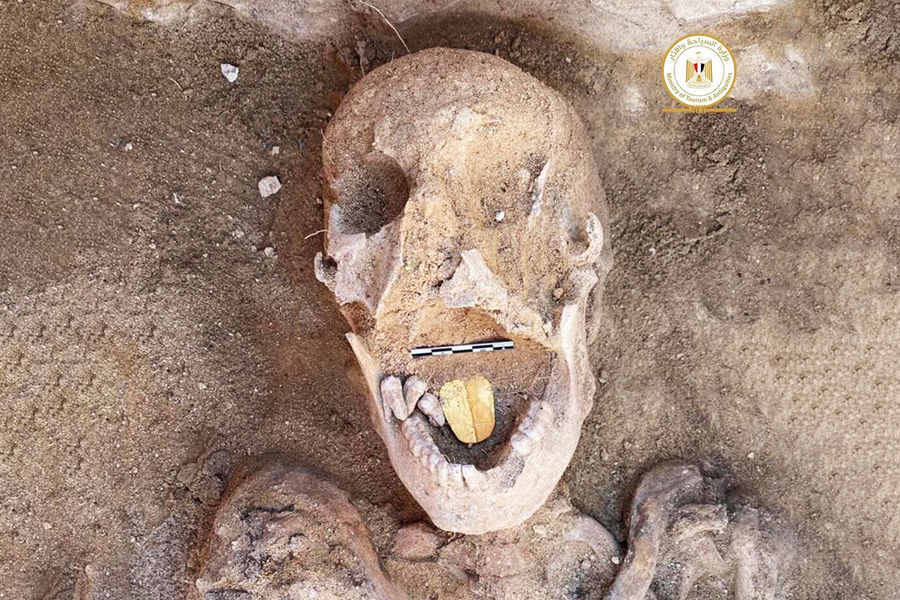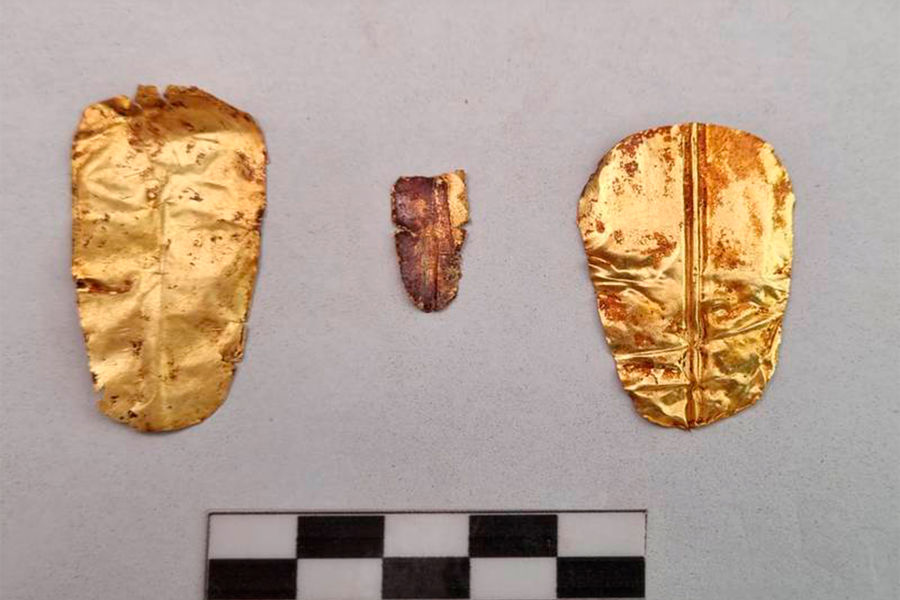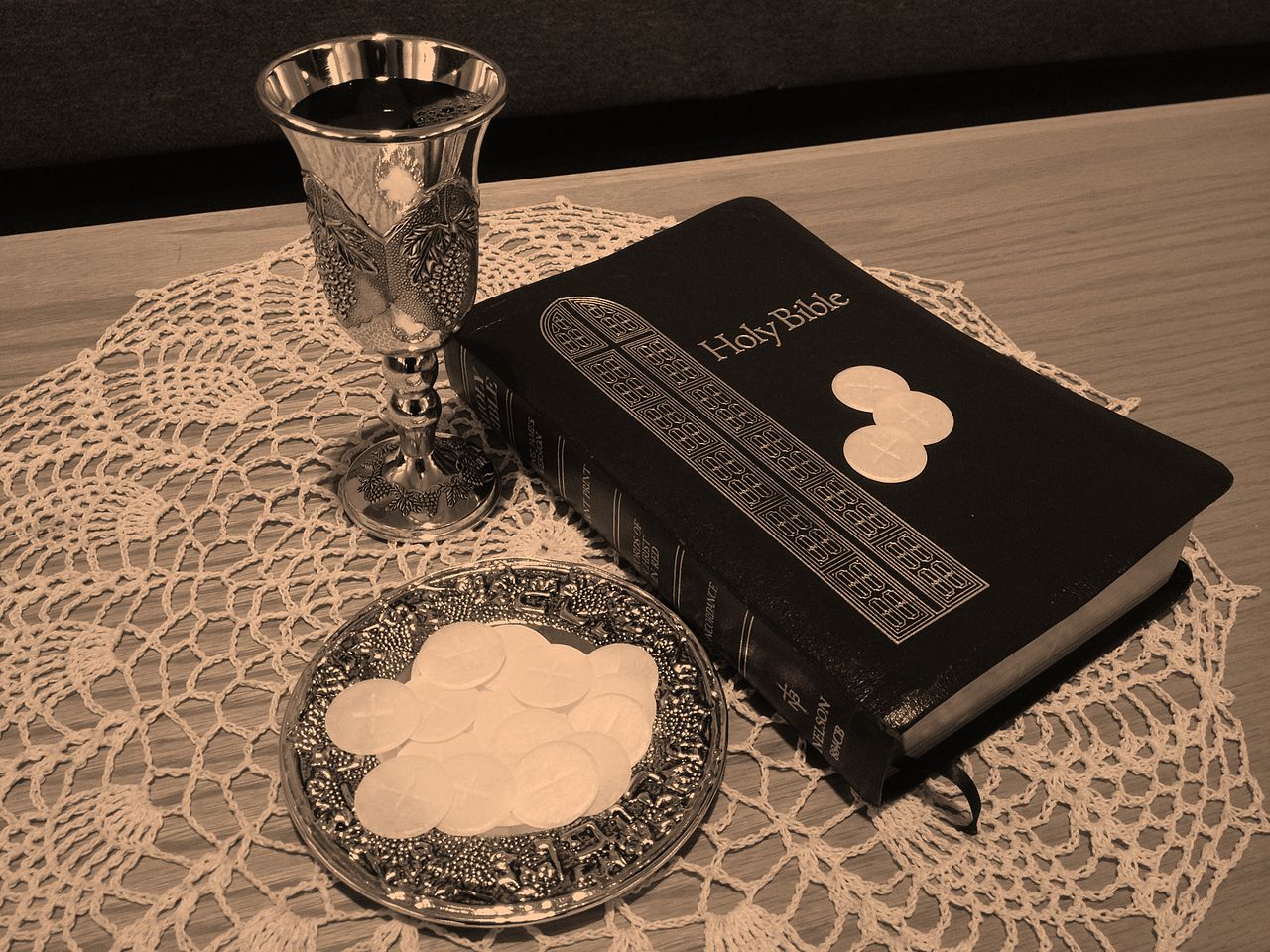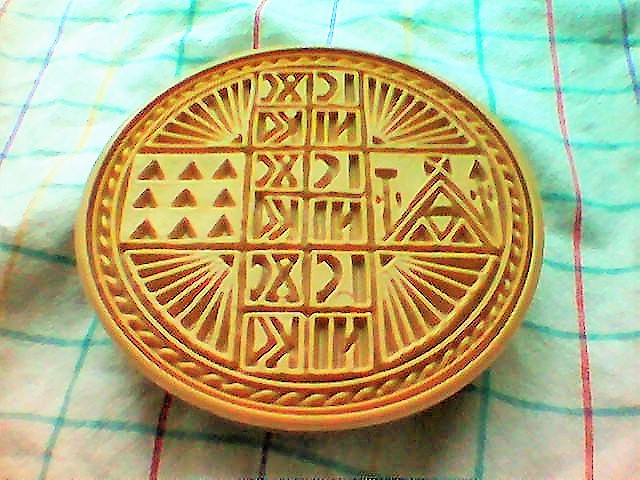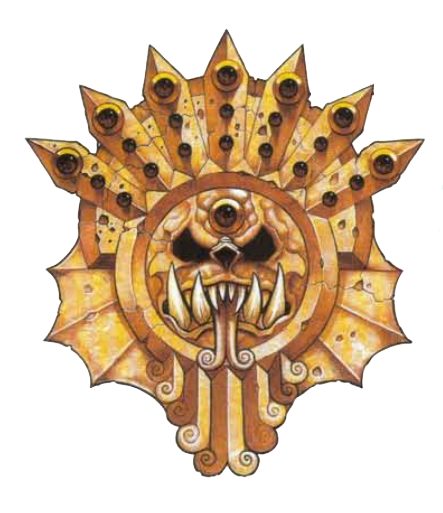The Templars and the Skull and Crossbones, the Nephilim and the Cabiri: Part 2
Ptah the Creator God
Apart from these stone statues and images, there are numerous accounts of giants and other hybrids (demigods) in Greek, Roman, Celtic, and Scandinavian mythology. However, there is one group I especially wish to focus on here, since they link up with previous comments that I have made concerning the strange representations of the Egyptian god Ptah (see images below).
With regard to the two images on the right, you would have to admit that we could be looking at stylised images of a grey alien. Moreover, the stone carving in the top left picture, which was taken at the Temple of Abydos, clearly looks like a modern representation of a grey alien (assuming it has not been photoshopped). Please keep these images in mind as we proceed.
Ptah was the Egyptian creator god who conceived the world and brought it into being through the creative power of his speech. Like many deities of ancient Egypt, he took many forms including being represented as a dwarf, naked and deformed.
Ptah was also a great worker of metals. According to the celebrated Egyptologist
E.A. Wallis Budge, he was also both a smelter and a caster, and sculptor, as well as the master architect (Freemasonry’s Great Architect of the Universe perhaps?) and designer of everything which exists in the world. He was particularly revered by metalworkers and blacksmiths. Indeed, his high priest was called “
chief controller of craftsmen”, which makes me think of the Freemasons’
Hiram Abiff, who Masons view as the chief architect of the Temple of Solomon.
The Greeks and the Romans claimed
Hephaistos and
Vulcan as his later names. To the Greeks, Hephaistos was an early smith god, cast down from the Olympian’s heaven by Zeus, for trying to protect his mother Hera (Earth).
Ptah is generally represented in the guise of a man with green skin, contained in a shroud sticking to the skin, wearing the divine beard, and holding a sceptre combining three powerful symbols of ancient Egyptian religion: the
Was sceptre (a symbol of power and dominion), the
Djed pillar and the
Ankh sign of life. Recall here that the C’s said the Ankh was the ancient symbol of mankind’s original home planet
D'Ankhiar, being a female symbol standing for the mother planet. If you look carefully again at the stone carving of the grey alien figure at Abydos, you will see an Ankh appearing above his head.
A Was Sceptre carried by the god Set, in the tomb of Thutmose III.
He is also carrying the Ankh in his right hand
The djed, also djt is one of the more ancient and commonly found symbols in ancient Egyptian religion. It is a pillar-like symbol in Egyptian hieroglyphs representing stability. It is associated with the creator god Ptah and Osiris, the Egyptian god of the afterlife, the underworld, and the dead. It is commonly understood to represent Osiris’s spine.
The djed came to be associated with Seker, the falcon god of the Memphite Necropolis, then with Ptah, the Memphite patron god of craftsmen. Ptah was often referred to as "the noble djed” and carried a sceptre that was a combination of the djed symbol and the ankh symbol of life. Ptah gradually came to be assimilated into Osiris. By the time of the New Kingdom, the djed was firmly associated with Osiris.
The
djed hieroglyph
was a pillar-like symbol that represented stability. It was also sometimes used to represent Osiris himself, often combined with a pair of eyes between the crossbars and holding the crook and flail, the usual insignia of Osiris.
Stucco relief of Ptah holding a staff that bears the combined ankh and djed symbols,
Late Period or Ptolemaic Dynasty, 4th to 3rd century BC
However, to me the Djed (sometimes referred to as the TET Pillar) looks more like a representation of some sort of technology. Indeed, I believe that the story of Osiris’ murder and dismemberment suggests more the destruction or disassembly of a machine rather than a divine being. Recall here that the C’s told Laura that STS 4th density gave the Ark of the Covenant to the Egyptian Pharaohs. Many of the depictions of the raising of the djed pillar relate to 18th Dynasty Pharaohs, which includes Thutmose III and Amenhotep III, Akhenaten’s father.

Was the Djed in essence a longitudinal scalar wave antenna, similar in purpose to Nikola Tesla’s Wardenclyffe Tower on Long Island?
Tesla theorised from his experiments that if he injected electric current into the Earth at just the right frequency, he could harness what he believed was the planet's own electrical charge and cause it to resonate at a frequency that would be amplified in "standing waves" that could be tapped anywhere on the planet to run devices or, through modulation, carry a signal. Was he just recreating what the ancient Egyptians already knew?
Quoting from
William Henry’s book
Blue Apples:
In the hieroglyph of Osiris two ‘TET’ pillars are featured on either side a mysterious object that resembles the Hebrew Ark of the Covenant. Beside them is Osiris’ Pillar of Love (far right). The Pillar of Osiris stood approximately forty feet tall and was lined with gold [
MJF: gold is an excellent conductor of electricity]
.
This pillar contains what appears to be a serpent. However, we are told it actually contained the “head” of Osiris.
The hieroglyph of Osiris
When the Pillar is mounted to the portable stand which resembles (in form and likely in function) the Biblical Ark of the Covenant a device of enormous power is created. It is a golden needle or antenna that ties the ‘thread’ (cord, chord) between the upper world and the lower worlds.
Henry noted that in Egyptian iconography, Ptah sometimes appears standing in front of a TET pillar. He tells us that In Egypt, the TET pillars were called “the backbone of Osiris.” In Egyptian mythology, Osiris is the green faced (like Ptah) saviour god. He, along with his wife Isis, came from Sirius and taught the art of gardening (MJF: which has a hidden, esoteric meaning here and does not simply refer to horticulture). This reference to Sirius takes us back to the C’s comments on the link between Osiris and Sirius and perhaps by extension to the Osirians, the progenitors of the Freemasons:
Q: I also noticed that the word 'Osiris' could also be slightly modified to say 'of Sirius.' Comment, please.
A: Sirius was regarded highly in your "past."
Q: What was the foundation of this regard for Sirius?
A: "From whence cometh, is seen that which knows no limitation."
I previously commented in my last article that the reference to “no limitation” here may link us with the Greek philosophers like Pythagoras who viewed ‘limitless’ (or the ‘unlimited’) as meaning characterless, indefinite, unbounded by time or space. It is also curious that the C’s should place quotation marks around the word “past” since they normally wish to emphasise something important when doing so.
According to Henry, Osiris’ pillar was considered a ladder to heaven (was this therefor the true biblical
Jacob’s Ladder?). This ‘ladder’ is a symbol of that which must be ascended in order to reach the Fields of Peace (
MJF: Recall here Francis Bacon’s seven step programme to enlightenment and the Masonic spiral staircase symbol). He states:
In the Pyramid Texts, in which the pharaoh’s journey to immortality is described, the two TET pillars are shown on either side of the “Door of Heaven.” The doors remain sealed until the pharaoh utters the word of power. Then, suddenly, the “double doors of heaven open up… the aperture of the celestial windows is open.” And soaring as a great bird, the pharaoh’s Ka has reached the land of the living.
Please note that to Henry, the Djed may also be symbolically equivalent to the Tree of Life with all that this implies. Refer again to the image of Abbe Saunière’s altar painting – the Magdalene in the Grotto shown earlier in this article:
Q: Okay, in this relief painting done by Berenger Sauniere in the church at Rennes le Chateau, Mary Magdalene is depicted as gazing hopefully or reverently at a tree branch formed into a cross, stuck in the ground. What kind of tree is it?
A: The "tree of life."
Incidentally, Henry views the symbol of a cluster of grapes or Blue Apples as the symbol of the pre-flood nuclear secrets. I think he is on to something here. Recall also that when Laura said “My magna? What in the world? Okay, "blue apples:" Stones or grapes?” the C’s responded “Why not both?” Earlier I linked Pythagoras to the use of stones or pebble when demonstrating his lessons. And it was, of course, the Greek philosophers like Pythagoras who originally gave the West the concept of the atom, which is derived from the ancient Greek word “atomos” meaning "uncuttable".
As we have seen, Ptah was the Egyptian god of craftsmen and the arts and was the patron of artists and metalworkers. But he was not the only god associated with metalwork in Egypt. Tim Wallace Murphy and Marylin Hopkins in their book Rosslyn Guardians of the Secrets of The Holy Grail tell us that in 1888, excavations at the Temple of Thebes revealed a statue of the god Kabeiros with a hammer in his hand. They pointed out that many esoteric scholars believe that Kabeiros was worshipped by the ancient Egyptian-Hebraic sect of the Kibeiri, the precursors of the Therapeutae and the (Jewish) Essenes.
So, who were the Kibeiri? If the Egyptian god Ptah may have been a front for grey aliens in the way that the C’s said Baal and Beelzebub were Lizard personifications, could Kabeiros have been so as well. Remember also what the C’s said about the Esseseni, who are new, modern day human hybrids being created by the Greys. Were the Cabiri (or Cabeiri) the grey aliens up to their same old tricks of hybridisation in antiquity? The following article may help to shed some light on this.
The Cabiri
A group of minor deities of Greek origin, the name appears to be of Semitic origin, signifying the "
great gods," and the Cabiri seem to have been connected in some manner with the sea, protecting sailors and vessels. The chief seats of their worship were Lemnos, Samothrace, Thessalia, and Boeotia. They were originally only two in number
, the elder identified with Dionysus, and the younger with
Hermes [
MJF: who can be linked to the Egyptian deity Thoth], who was also known as
Cadmilus.
Their worship was later amalgamated with that of
Demeter and
Ceres, with the result that two sets of Cabiri came into being—Dionysus and Demeter, and Cadmilus and Ceres. A Greek writer of the second century B.C. states that they were four in number — Axisros, Axiokersa, Axiokersos, and Casmilus, corresponding, he states, to
Demeter, Persephone, Hades and Hermes.
The Romans identified the Cabiri with the Penates, the Roman gods of the household. A festival of these deities was held annually in Lemnos and lasted nine days, during which all domestic and other fires were extinguished and sacred fire was brought from Delos. From this fact it has been judged that the Cabiri may have been volcanic demons, although this view has largely been abandoned.
It was in
Samothrace that the cult of the Cabiri attained its widest significance, and in that island as early as the fifth century B.C., their mysteries, or religious rites, were held with great enthusiasm and attracted almost universal attention.
Initiation into this cult was regarded as a safeguard against misfortune of all kinds, and persons of distinction exerted all their influence to become initiates. Interesting details as to the bacchanal cult of the Cabiri were obtained in 1888 by the excavation of their temple near
Thebes. Statues of a deity called
Cabeiros were found, attended by a boy cupbearer. His attributes appear to be bacchic.
The Cabiri were often mentioned as powerful magicians, and
Herodotus and other writers speak of the Cabiri as
sons of Vulcan. Cicero, however, regarded them as the children of Proserpine, and Jupiter was often named as their father.
Strabo, on the other hand, regarded them as the ministers of Hecate, and Bochart recognized in them the three principal infernal deities, Pluto, Proserpine, and Mercury. Although it is assumed that they were originally of Semitic origin, a temple of
Memphis was found consecrated to them in Egypt. It is not unlikely, as Herodotus supposed, that the cult was
Pelasgian in origin, as it is known that the Pelasgians occupied the island of Samothrace and established there certain mysteries, which they afterward carried to Athens. There are also traditions that the worship of the Cabiri originally came from the
Troad (territory surrounding the ancient city of
Troy), a Semitic centre [
MJF: Could refugee Trojans have brought the worship of the Cabiri with them as they fled Troy in what is today Cambridge in England?]. In his book
The Egypt of Herodotus (1841),
John Kenrick brings forward the following conclusions concerning the Cabiri:
2. The Cabiri belonged also to the Phoenician theology. The proofs are drawn from the statements of Herodotus. Also, the coins of Cossyra, a Phoenician settlement, exhibit a dwarfish figure with the hammer and short apron, and sometimes a radiated head, apparently allusive to the element of fire, like the star of the Dioscuri.
MJF. This description is very indicative of grey aliens, who are often described as being small, almost child-like in appearance with large heads – think here of the 12th century legend of the Green Children of Woolpit in Suffolk, England, who the C’s said were part of a real phenomenon of the time related to widespread [grey] alien interactions with the European populations, which were explained by the percipients as being "green children". This may be equally true of the Egyptians who perceived the being they called Ptah as a green (but really grey!) misshapen dwarf. There is also an echo of the Cabiri in the Norse legend of the thunder god Thor, whose hammer was made in Svartalfheim, the land of the dwarves who were renowned as the greatest smiths in all of the Nine Worlds. We have previously considered the Children of Odin on this thread, who may have been human-alien hybrids of the special bloodline that Laura suggested we focus on at the beginning of this thread.
3. The Isle of Lemnos was another remarkable seat of the worship of the Cabiri and of Vulcan, as representing the element of fire.
[
MJF: Curiously with regard to the five regular solids, Pythagoras was supposed to have taught that the element of fire came from the pyramid (a tetrahedron) which may link with something the C’s once said in response to Ark:
Q: (Ark) It was supposed to be related to sound, but I have a problem with sound because sound frequency depends on the medium in which sound propagates. The medium can be air, can be stone, can be everything; frequency spectrum will depend on the medium.Now we are talking about pyramid and sound related to pyramid. Was this …
A: Yes...Pyramid, Pyrenees, Pyr...
Q: (V) There must be something about the Pyr. How does Pyr relate to prime numbers? (Ark) Where is pyramid, where are they coming from, where's the name coming from, what's this? Pyro, fire, no? (L) Yeah, fire.
A: Frequency of light...]
Mystic rites were celebrated here over which they presided, and the coins of the island exhibit the head of Vulcan, or a Cabirus, with the pileus, hammer, and forceps. It was this connection with fire, metallurgy, and the most remarkable product of the act, weapons of war [MJF: Again, think here of Thor’s hammer], which caused the Cabiri to be identified with the Cureks of Etolia, the Idaei Dactyli of Crete, the Corybantes of Phrygia, and the Telchines of Rhodes. They were the same probably in Phoenician origin, the same in mystical and orgiastic rites, but different in number, genealogy, and local circumstances, and by the mixture of other mythical traditions, according to the various countries in which their worship prevailed. The fable that one Cabirus had been killed by his brother or brothers was probably a moral mythos representing the result of the invention of armour and analogous to the story of the mutual destruction of the men in brazen armour, who sprang from the dragon's teeth sown by Cadmus and Jason. It is remarkable that the name of the first fratricide signifies a 'lance,' and in Arabic a 'smith.'
4. The worship of the Cabiri prevailed also in Imbros, near the entrance of the Hellespont, which makes it probable that the great gods in the neighbouring island of Samothrace were of the same origin. The Cabiri, Curetes, and Corybantes appear to have represented air as well as fire. This island was inhabited by Pelasgi, who may have derived from the neighbouring country of Thrace and Phrygia, and with the old Pelasgic mysteries of Ceres. Hence, the various explanations given of the Samothracian deities, and the number of them so differently stated, some making them two, some four, some eight, the latter agreeing with the number of early Egyptian gods mentioned by Herodotus. It is still probable that their original number was two, from their identification with the Dioscuri and Tyndaridae, and from the number of the Pataeci on Phoenician vessels. The addition of Vulcan as their father or brother made them three, and a fourth may have been their mother Cabira.
5. The Samothracian divinities continued to be held in high veneration in late times, but are commonly spoken of in connection with navigation, as the twin Dioscuri or Tyndaridae; on the other hand, the Dioscuri are spoken of as the Curetes or Corybantes. The coins of Tripolis exhibit the spears and star of the Dioscuri, with the legend 'Cabiri'.
6. The Roman Penates have been identified with the Dioscuri, and Dionysius states that he had seen two figures of ancient workmanship, representing youths armed with spears, which, from an antique inscription on them, he knew to be meant for Penates. So, the 'Lares' of Etruria and Rome.
7. The worship of the Cabiri furnishes the key to the wanderings of Aeneas, the foundation of Rome, and the War of Troy itself, as well as the Argonautic expedition. Samothrace and the Troad were so closely connected in this worship, that it is difficult to judge in which of the two it originated, and the gods of Lavinium, the supposed colony from Troy, were Samothracian. Also, the Palladium, a pygmy image, was connected at once with Aeneas and the Troad, with Rome, Vesta, and the Penates, and the religious belief and traditions of several towns in the south of Italy.
MJF: The fact that Imam Wilkens held that the Bronze Age Trojan War really took place in Cambridge in England and not Asia Minor, leads one to suspect that the Scandinavian myths of the weapon making dwarves of Svartalfheim may pre-date the Greek and Roman legends of the Cabiri, Curetes, and Corybantes and the Roman Penates. Did the refugee Trojans or other migrating Northern European Celts take these legends with them? Did they land up in Italy, Greece and Asia Minor?
Kenrick also recognizes a mythical personage in Aeneas, whose attributes were derived from those of the Cabiri, and continues with some interesting observations on the Homeric fables. He concludes that the essential part of the War of Troy originated in the desire to connect together and explain the traces of an ancient religion. He also notes one other remarkable circumstance, that the countries in which the Samothracian and Cabiriac worship prevailed were peopled either by the Pelasgi or by the Aeolians, who of all the tribes comprehended under the general name Hellenes, approach the most nearly in antiquity and language to the Pelasgi.
"We seem warranted, then," Kenrick observes, "in two conclusions; first that the Pelasgian tribes in Italy, Greece and Asia were united in times reaching high above the commencement of history, by community of religious ideas and rites, as well as letters, arts, and language. Secondly, large portions of what is called the heroic history of Greece, are nothing else than fictions* devised to account for the traces of this affinity, when time and the ascendancy of other nations had destroyed the primitive connection and rendered the cause of the similarity obscure. The original derivation of the Cabiriac system from Phoenicia and Egypt is a less certain, though still highly probable conclusion.
*If the Trojan War was, in reality, fought between Celtic tribes in Britain and Northern Europe rather than in Asia Minor as mainline historians believe, then this would support Kenrick’s observation.
Kenrick also concluded that "the name Cabiri has been very generally deduced from the Phoenician '
mighty' and this etymology is in accordance with the fact that the gods of Samothrace were called 'Divi potes."'
Kenrick believed, however, that the Phoenicians used some other name, which the Greeks translated "Kabeiros," and that it denoted the two elements of fire and wind.
In his book
India in Greece (1856),
Edward Pococke claims the Cabiri were the "Khyberi," or people of the "Khyber," or a Buddhist tribe — a totally unlikely origin for them. In the
Generations of Sanchoniathon, the Cabiri are claimed as
Phoenicians [
MJF: who were connected to ancient Lebanon], although in a mystical sense. According to the myth, the Wind and the Night gave birth to two moral men, Aeon and Protogonus. The immediate descendants of these two were "
Genus" and "
Genea," a man and woman. To Genus were born three mortal children, Phôs, Pur, and Phlox, who discovered fire, and these again
fathered sons of vast bulk and height, whose names were given to the mountains in which they dwelt, Cassiul, Libanus, Antilibanus, and Brathu. The issue of these giant men by their own mothers were Meinrumus, Hypsuranius, and Usous. Hypsuranius
inhabited Tyre; Usous becoming a huntsman, consecrated two pillars to fire and the wind with the blood of the wild beasts that he captured.
MJF: It is curious that we see here a reference to a descendant called “Genus” who begat three mortal children who in turn fathered giants, whose offspring inhabited Tyre, a city in Lebanon linked to the Phoenicians, where, of course, the ancient town of Baalbek, constructed by giants, is also located.
In this account are we seeing an echo of the genetic programme the C’s spoke of which was an attempt to recreate the Nephilim giants (see above) by intermixing Nephilim and Human DNA, using human females to bear the resulting children. The C’s informed Laura that Baalbek was originally constructed by Antereans and early Sumerians (by which they supposedly meant Atlanteans) in conjunction with these giants, in anticipation of the success of the genetic project, but the building was halted in 3218 B.C. due to the first appearance and pass of the planet Venus. Elsewhere, the C’s told us that Baalbek was built by the
Ark of the Covenant faction rather than the Grail faction, although the Ark apparently was never at Baalbek, which suggests the Ark faction were Sumerians. It is rare for the C’s to get mixed up but where they referred to the Antereans, they may have meant the Antareans, who they had previously described as being an STS humanoid race from Orion. Were these Antareans running the genetic programme to recreate the Nephilim? It is interesting to note that thousands of years later, according to the C’s, a group calling themselves the Antareans would have dealings with the German
Thule Society, the organisation that some view as the midwife to the
Nazi Party:
Session 12 October 1996:
Q: (L) Okay, change of subject: On a couple of occasions, you mentioned a group called the Antareans. Who were these people or aliens?
A: Antareans were the name given by 4th density groups in contact with the Thule Society on third density Earth, before and during World War One. [
MJF: I wander if this should be World War Two?]
The Nazis were, of course, being used by STS forces to create an Aryan master race for conquest of the Earth in what the C’s have told us was a dry run for events unfolding today. Hence, the Antareans would still appear to be using the same playbook:
A: This means encoding to activate after elevation to 4th density, thus if not eliminated, negates Nephalim domination and absorption. Jews were prior encoded to carry out mission after conversion, though on individual basis. The Nazis did not exactly know why they were being driven to destroy them, because they were being controlled from 4th density STS. But, Hitler communicated directly with Lizards, and Orion STS, and was instructed on how to create the "master race."
However, the reference to “Genus” also makes me think of the following extract from the transcripts, which I quoted earlier:
Q: Okay, in this relief painting done by Berenger Sauniere in the church at Rennes le Chateau, Mary Magdalene is depicted as gazing hopefully or reverently at a tree branch formed into a cross, stuck in the ground. What kind of tree is it?
A: The "tree of life." [
MJF: Is this DNA?]
Q: Well, I had a different idea... some people say it is an acacia tree. Are you saying it is not a genus, horticulturally?
A: Genus is family tree.
Q: And what family is it a family tree for?
A: Check your Magna for lesson.
Well, we learned earlier that “Magna” may stand for
Magna Grecia, the Greek colonised region of southern Italy to which Pythagoras came and established a school at Croton. We also learned that the ancient town of
Ferentino, which is forty miles south-east of Rome in what was Roman district of Latium, still possesses megalithic (cyclopean) walls within its precincts that are built of huge stones. It is in fact one of five towns in the region that have such walls. Interestingly, all five towns are linked with the Roman god Saturn –
Cronus to the Greeks who was the god of time and
King of the Titans (who were, of course, giants).
Is it possible the C’s were referring to the family tree and descendants of Genus and, therefore by extension the Nephilim giants who would occupy Tyre and Baalbek? Were they in turn linked to the Cabiri or Kabeiros who esoteric scholars believe were worshipped by the ancient Egyptian-Hebraic sect of the
Kibeiri, the precursors of the
Therapeutae and the (Jewish)
Essenes and by extension the later
Assassins and the
Knights Templar?
Much later, from the race of Hypsuranius issued Agreus and Halieus, inventors, it is said, of the arts of hunting and fishing. From these descended two brothers, one of whom was Chrysor (or Hephaestus), skilled in words, charms, and divinations; he also invented boats and was the first to sail. His brother first built walls with bricks, and their descendants in the second generation seem to have completed the invention of houses by the addition of courts, porticos, and crypts. They are called
Aletae and
Titans, and in their time began animal husbandry and hunting with dogs. From the Titans descended Amynus, a builder, and Magus, who taught men to construct villages and tend flocks, and of these two were begotten Misor (perhaps Mizraim), whose name signifies Well-freed, and Sydic, whose name denotes the Just; these discovered the use of salt.
From Misor descended Taautus (Thoth, Athothis, or
Hermes Trismegistus), who invented letters; and from Sydic descended the Dioscuri, or Cabiri, or Corybantes, or Samothraces. According to Sanchoniathon, they first built a complete ship and there were others descended from them who discovered medicine and charms. All this dates prior to
Babylon and the gods of paganism, the elder of whom are next introduced in the
Generations.
Finally, Sanchoniathon settles
Poseidon (Neptune) and the Cabiri at Berytus, but not till
circumcision [
MJF: a semitic, especially Hebrew practice], the sacrifice of human beings, and the portrayal of the gods had been introduced. He describes the Cabiri as husbandmen and fishermen, which leads to the presumption that
the people who worshiped those ancient gods were at length called by their name. The method of initiation unto the cult was as follows:
"The candidate for initiation was crowned with a garland of olive and wore a purple band round his loins. Thus attired, and prepared by secret ceremonies (probably mesmeric), he was seated on a throne brilliantly lighted, and the other initiates then danced round him in hieroglyphic measures. It may be imagined that solemnities of this nature would easily degenerate into orgies of the most immoral tendency, as the ancient faith and reverence for sacred things perished, and such was really the case. Still, the primitive institution was pure in form and beautiful in its mystic signification, which passed from one ritual to another, till its last glimmer expired in the freemasonry* of a very recent period. The general idea represented was the passage through death to a higher life, and while the outward senses were held in the thrall of magnetism, it is probable that revelations, good or evil, were made to the high priests of these ceremonies."
*MJF: It is curious that he should make a link here between this ancient cult and that of modern-day Freemasonry.
It is extremely difficult to arrive at any conclusion regarding the origin of the Cabiri, but they were probably of Semitic origin, arriving in Greece through Phoenician influence, and that they approximated in character the gods with whom the Greeks identified them is extremely likely.
Sources:
Bryant, Jacob.
A New System; or an Analysis of Ancient Mythology. 3 vols. 1776. Reprint, New York: Garland, 1979.
Varro, Marcus Terrentius.
De Lingua Latina. Translated as
On the Latin Language. Cambridge, Mass.: Harvard University Press, 1958.
Samothrace and the Samothracian Mysteries
It is noticeable that the above article reveals a strong link between the Cabiri or Cabeiri and the island of Samothrace. This provides us with an indirect, if tenuous, link to Pythagoras who came from the island of Samos, which is also in the Aegean Sea. It is clear we need to distinguish here between the Cabiri as gods and their followers, who also seem to have attracted their name. The ancient people most identified with them appear to have been the
Pelasgians, who may have been a pre-Greek or Hellenic people who occupied the island of Samothrace until it was colonised by Greeks from Samos either in the 8th Century BC or the 6th Century BC (the age of Pythagoras).
Samothrace was not a state of any political significance in ancient times. It was, however, the home of the
Sanctuary of the Great Gods, a site of important Hellenic and pre-Hellenic religious ceremonies. Among those who visited this shrine to be initiated into the island cult were
Lysander of Sparta,
Philip II of Macedon (Alexander the Great’s father) and
Lucius Calpurnius Piso Caesoninus the father-in-law of Julius Caesar.
The ancient city, the ruins of which are called
Palaeopolis ("old city"), was situated on the north coast. Considerable remains still exist of the ancient walls, which were built in massive
Cyclopean style, as well as of the Sanctuary of the Great Gods, where mysterious rites (Samothracian Mysteries) took place which were open to both slaves and free people (being similar to the Eleusinian Mysteries – which revolved around the cults of Demeter and Persephone and represented the myth of the abduction of Persephone from her mother Demeter by the king of the underworld Hades).
Hence, as with Malta, Sardinia and Ferentino, we find structures with Cyclopean sized walls. which may indicate the involvement of the Nephilim giants.
During the Roman and particularly the imperial period, thanks to the interest of the Roman emperors, the radiation of the sanctuary of the Great Gods surpassed Greek borders and Samothrace became an international religious centre, where pilgrims flocked from all over the Roman world.
The Kabeiroi (Cabiri/Cabeiri) were supposedly twin gods (daimones) who presided over the orgiastic dances of the mysteries of Samothrace which were held in honour of the goddesses
Demeter, Persephone, and
Hekate. They were famed metalworkers,
dwarfish sons of the god Hephaistos (Hephaestus), who served their father at his Lemnian forge. Like their mother Kabeiro (Cabeiro) the pair were also sea-divinities who came to the aid of sailors in distress.
According to Clement though, the Kabeiroi were three in number, but two of the brothers committed an act of fratricide. The pair later recovered the phallus of
Zagreus who had been dismembered by the Titan gods [
MJF: this reminds me of the ancient Egyptian legend of Osiris and his missing phallus, where his wife and sister Isis was forced to make a wooden replacement for him so she could conceive Horus] and established it in the Shrine of the Mysteries. Zagreus was a minor god in Greek mythology, usually conflated with the god of wine,
Dionysus. He was worshipped by the followers of Orpheus
*, and according to their beliefs, he was the son of Zeus and Persephone, after the former took the form of a serpent (a Lizard being perhaps?) and lay with her.
*
It has been suggested by one British alternative historian Comyns Beaumont that the Orphic mysteries may have had their origins with the Cabeiri. I hope to have more to say about the intriguing theories of Comyns Beaumont in a future post, suffice to say for now that Beaumont seems to have been an inspiration for Immanuel Velikovsky and his works such as Worlds in Collision. See: Velikovsky, Immanuel - Worlds in Collision - PDF Free Download (docer.tips).
In the
Cabiri by
Aeschylus, the two gods
welcomed the Argonauts to their island and initiated them in a drunken orgy, a feature often associated with rituals connected with Dionysus and his Roman equivalent Bacchus. The twin gods were also identified with the
Dioskouroi (Dioscuri) especially in the myth of the Argonauts. The Dioscuri were the twins
Castor and
Pollux, born to Leda after her seduction by Zeus. Castor was mortal, but Pollux was immortal; at Pollux's request they shared his immortality between them, spending half their time below the earth in Hades and the other half on Olympus (echoing the way in which
Persephone, a harvest goddess, the daughter of
Demeter would spend much of the year on Earth but part in the underworld with
Hades). They are often identified with the constellation Gemini. Like the Cabiri, the twins succoured shipwrecked sailors and received sacrifices for favourable winds. They would also join
Jason and the other members of the Argo’s crew on the voyage to retrieve the Golden Fleece. The twins may also be the two young, clean faced shepherds depicted in
Nicolas Poussin’s painting of
The Shepherds of Arcadia, with the young shepherdess possibly being Persephone or Ariadne.
Quoting from the
‘Dictionary of Greek and Roman Biography and Mythology’.
CABEIRI (Kabeiroi), mystic divinities who occur in various parts of the ancient world. The obscurity that hangs over them, and the contradictions respecting them in the accounts of the ancients themselves, have opened a wide field for speculation to modern writers on mythology, each of whom has been tempted to propound a theory of his own. The meaning of the name Cabeiri is quite uncertain and has been traced to nearly all the languages of the East, and even to those of the North.
The Greek logographers considered the Cabeiri as the grandchildren of Proteus and as the sons of Hephaestus, and consequently as inferior in dignity to the great gods on account of their origin. Their inferiority is also implied in their jocose conversation with the Argonauts, and their being repeatedly mentioned along with the Curetes, Dactyls, Corybantes, and other beings of inferior rank. Herodotus (iii. 37) says, that the Cabeiri were worshipped at Memphis as the sons of Hephaestus, and that they resembled the Phoenician dwarf-gods (Pataïkoi*).
The Greek historian Herodotus was the first to mention "pataikoi" in connection with Phoenician dwarf-form amulets (see image below). It is believed that Egyptian pataikoi may have some connection with Ptah, the god of craftsmen, because dwarves were commonly depicted in ancient Egyptian workshops. For dwarves should we read Greys here?
An Egyptian Faience Pataikos from the Ptolemaic Period 332-330 BC
If we now look back upon the various statements we have gathered, for the purpose of arriving at some definite conclusion, it is manifest, that the earliest writers regard the Cabeiri as descended from inferior divinities, Proteus and Hephaestus: they have their seats on earth, in Samothrace, Lemnos, and Imbros. Those early writers cannot possibly have conceived them to be Demeter, Persephone or Rhea. It is true those early authorities are not numerous in comparison with the later ones; but Demetrius, who wrote on the subject, may have had more and very good ones, since it is with reference to him that Strabo repeats the assertion, that the Cabeiri, like the Corybantes and Curetes, were only ministers of the great gods. We may therefore suppose, that the Samothracian Cabeiri were originally such inferior beings; and as the notion of the Cabeiri was from the first not fixed and distinct, it became less so in later times; and as the ideas of mystery and Demeter came to be looked upon as inseparable, it cannot occasion surprise that the mysteries, which were next in importance to those of Eleusis, the most celebrated in antiquity, were at length completely transferred to this goddess.
If the Cabiri were deemed to be inferior to the great gods, acting merely as their ministers, this in many ways mirrors the relationship that would seem to exist between the Lizard beings (Alpha Draconians) and the Zeta Reticuli Greys. According to the C’s, the Greys can be viewed as 4th density cybergenic stooges of the Lizards for whom they do a lot of their dirty work (human abductions and medical experiments etc.). The C’s have also told us that Baal, the great god of the Canaanites and Phoenicians (the Lebanese city of Baalbek being named after him) was a Lizard being, as was Beelzebub. This may be borne out by the description of the Cabiri as misshapen dwarves, which matches the description of the modern-day Greys. However, it is worth recalling that both the Greys and the Lizards are capable of shapeshifting, so they can take on other appearances as and when necessary (as Terry and Jan, the friends of Laura who often participated in many of the early Cassiopeian sessions, would find out in Las Vegas).
We know from the C’s that the Lizards, Greys and other STS 4th density beings have played a part in creating human hybrids over the millennia (which according to Professor David Jacobs in his book ‘The Threat’ is still an ongoing process). Should we not start to review the ancient myths and legends of gods, giants, elves, dwarves (with their high-tech and metallurgical skills), and super weapons like Thor’s Hammer and Odin’s spear in the light of humanity’s multigenerational interaction with these 4th density extra-terrestrials? This would necessarily lead to a radical revision of ancient history and reveal that extra-terrestrials have had a far-reaching influence on human affairs and not for the better.

